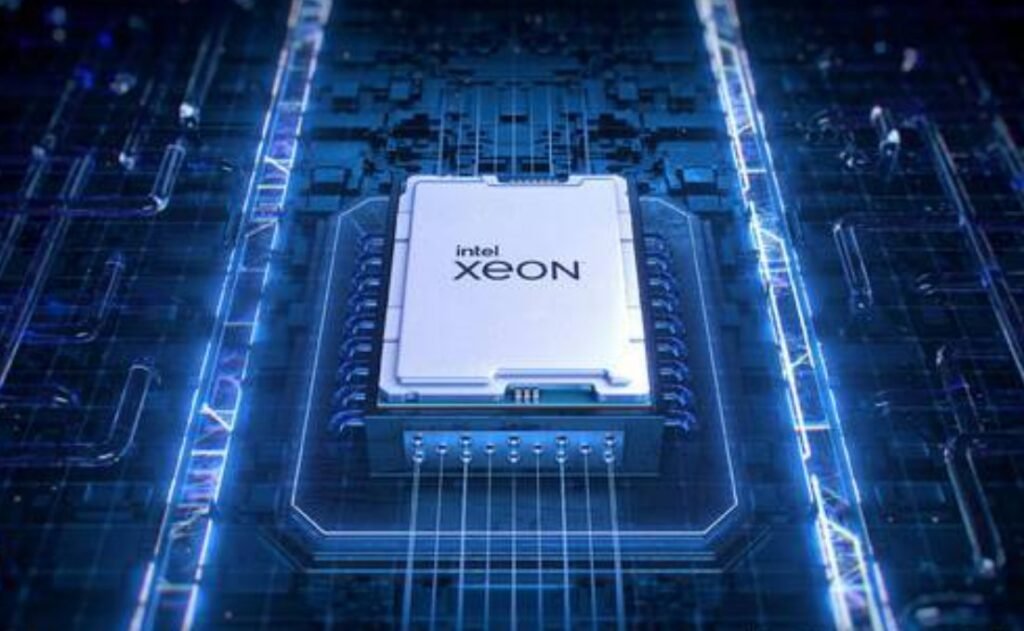Intel has announced the launch of its 5th Gen Xeon Scalable processors, codenamed Emerald Rapids, on December 14, 2023. The new processors are a refresh to the current generation 4th Gen Xeon Scalable Sapphire Rapids chips, and offer higher performance, larger cache, and improved memory speeds. The new processors are also socket-compatible with the current batch of servers, allowing for easy migration from the previous generation.
Intel says that Emerald Rapids is its last generation of processors in the current sockets, before moving to the much larger Birch Stream platform that will take Granite Rapids (P-core 2024), Sierra Forest (E-core 2024), and Clearwater Forest (E-core 2025). This is the generation where we expect Intel to hit 64 cores and we also expect improvements to DDR5 memory speeds.

Emerald Rapids is expected to make use of the Raptor Cove core architecture, which is an optimized variant of the Golden Cove core that will deliver 5-10% IPC improvement over Golden Cove cores. Emerald Rapids will also pack up to 64 cores and 128 threads, which is a small core bump over the 56 cores and 112 threads featured on Sapphire Rapids chips.
Emerald Rapids will also feature a significant boost in the L3 cache, which will be up to 320 MB per processor, compared to 112.5 MB on Sapphire Rapids. This will help improve the performance of data-intensive workloads, such as AI, cloud, and analytics.
Emerald Rapids: A Drop-in Replacement for Sapphire Rapids Servers
Emerald Rapids will be a drop-in replacement for Sapphire Rapids servers, as they will use the same LGA-4677 socket and the same Eagle Stream platform. This means that customers who have already invested in Sapphire Rapids servers will be able to upgrade to Emerald Rapids processors without changing their hardware or software.
Intel says that Emerald Rapids will offer higher performance per watt in the same power envelope as Sapphire Rapids, and will deliver increased core density gen-on-gen. Emerald Rapids will also support the same features as Sapphire Rapids, such as PCIe Gen5, CXL 1.1, Optane Persistent Memory 300 series, and Advanced Matrix Extensions (AMX).
Emerald Rapids will be available in 1S and 2S server configurations, while the 4S-8S platforms will have to wait for the next-generation Granite Rapids processors for an upgrade. Emerald Rapids will also have SKUs ranging from 125W to 350W TDPs, according to a leak by YuuKi_AnS on Twitter.
Emerald Rapids: Intel’s Response to AMD’s EPYC Genoa
Emerald Rapids is Intel’s response to AMD’s EPYC Genoa processors, which are expected to launch in early 2024. EPYC Genoa will be based on the Zen 4 core architecture, and will feature up to 96 cores and 192 threads, as well as 12-channel DDR5-5200 memory and 128 PCIe Gen5 lanes.
EPYC Genoa will also have a larger L3 cache than Emerald Rapids, with up to 384 MB per processor, compared to 320 MB on Emerald Rapids. However, Emerald Rapids will have a larger L2 cache than EPYC Genoa, with up to 128 MB per processor, compared to 96 MB on EPYC Genoa.
Emerald Rapids and EPYC Genoa will compete head-to-head in the server market, where Intel still holds a dominant position, but AMD has been gaining ground in recent years. Both processors will offer impressive performance, features, and scalability for a wide range of workloads, such as AI, cloud, HPC, and edge computing.
Final Words
Emerald Rapids is Intel’s latest and last generation of processors in the current sockets, and will offer a refresh to the current generation Sapphire Rapids chips. Emerald Rapids will launch on December 14, 2023, and will be compatible with the existing Eagle Stream platform. Emerald Rapids will offer higher performance, larger cache, and improved memory speeds, and will compete with AMD’s EPYC Genoa processors, which are expected to launch in early 2024.
